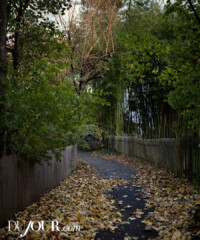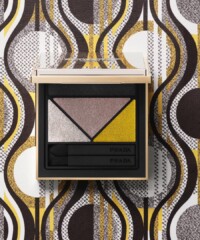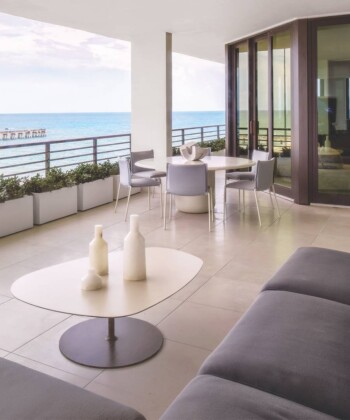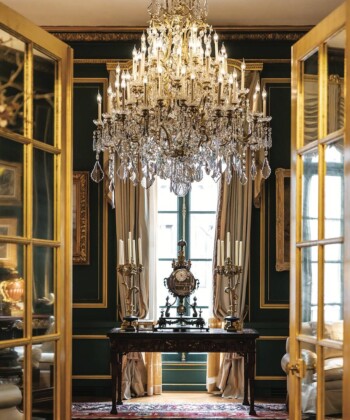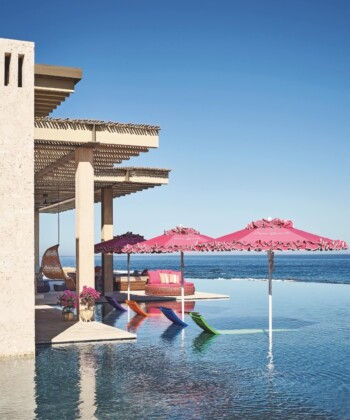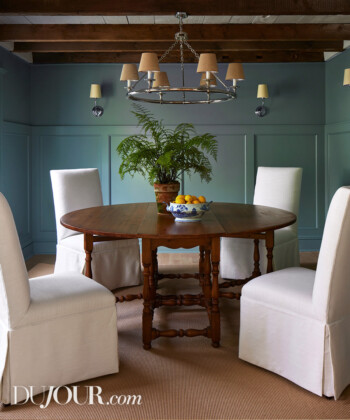In New York, the land of multimillion-dollar penthouses and double-wide brownstones, a standalone home cocooned by lush landscaping is the holiest of grails. Sure, there are charming Victorians on Staten Island and turn-of-the-century Colonial Revival manses in Brooklyn’s Prospect Park South—some with sizeable front lawns, even. But those are still stridently urban in character, with front doors opening onto sidewalks and property lines that adhere to the city grid. Upmarket house hunters seeking pastoral acreage and a speedy Midtown commute typically set their sights beyond city limits, zeroing in on a short list of tony burbs like Scarsdale, Larchmont and Greenwich.
But there is one oft-overlooked New York City neighborhood where it is possible to buy a freestanding home—a castle, even—on a wooded lot, just miles from Manhattan: Riverdale. The under-the-radar nabe in the northwest corner of the Bronx sits at one of the highest elevations in the city, affording hillside homes both an aura of seclusion and transporting views of the Palisades. A number of leafy lanes spiral into cul-de-sacs, that defining suburban feature. Squint and you’d think you were in New Canaan, not New York.
Its residents regard Riverdale as a happy medium between city and country. Trim your topiaries in the morning and then pop down to the Four Seasons (just 10 miles south) for lunch; shop Fifth Avenue by day and bird watch by dusk. “When you live in Riverdale, you don’t need a country house,” says Anne Shahmoon, an agent with Exclusive Properties Sotheby’s International Realty who specializes in the area’s stately abodes. That is not a sales pitch, but the voice of experience: Shahmoon lives here, too, lured by its proximity to—and isolation from—the hustle-bustle. “We moved here 14 years ago because one daughter attended school in Manhattan and the other in Riverdale. We weren’t quite ready to live in the city; Riverdale proved the perfect in-between spot.”
Although the area first became a haven for upwardly mobile urban expats in the mid-19th century, the arrival of railways in the 1850s cemented its status as a bedroom community. The most picturesque estates date back to this period, including Wave Hill, a 28-acre property with manicured gardens and a Greek Revival mansion built in 1843. (Notable figures like Theodore Roosevelt and Mark Twain took up residence in the home.)
Though two residential zones have been given landmark status—small portions of the Estate Area and Fieldston in its entirety—successive efforts to preserve the area’s old-world character have been even more instrumental. When the City of New York annexed the neighborhood in 1874, Frederick Law Olmsted, who designed Central Park, helped thwart an attempt to superimpose the urban grid on Riverdale’s sinuous streetscape; as a result, straight lines segue to curves after 239th Street. And in 1975, residents fought to designate Riverdale a Special Natural Area District, an act that safeguarded its marshes, century-old oaks and jagged rock formations from impending development.
Another strategy to mitigate—or at least micro-manage—development was spearheaded by wealthy residents who bought tracts of land for subdivision into garden communities. The largest was Riverdale’s Fieldston section, designed to harmonize with the surrounding mid-19th-century manses. Strict guidelines dictated minimum house and plot sizes as well as architectural styles—hence the preponderance of Tudor, Mediterranean and Medieval Revival structures. The committee also designated approved architects, among them Dwight James Baum, who designed 62 of Fieldston’s homes. Courtesy of their exquisite detailing and grand yet humanistic scale, his designs command top dollar in today’s real-estate market.
There are more modern subdivisions, too, including Ladd Road, a neighborhood of midcentury-era glass boxes. In 2006, the noted classicist Robert A.M. Stern was tapped to mastermind Villanova Heights, an ambitious development adjacent to what is perhaps Riverdale’s most notorious property: Chapel Hill Mansion, built in 1928 by a prominent member of the Theosophical religious organization in anticipation of the Second Coming (Jesus apparently has a yen for rococo fireplace surrounds and parquetry). Stern’s mansions, though larger than many neighboring homes, were painstakingly conceived to be unobtrusive. “They were designed to look like wings were added to a central structure, giving the sense that they grew over time,” explains Gary Brewer, a partner in the firm. “We wanted to illustrate that you could add to a historic community in a manner that’s architecturally appropriate”—yet scaled for modern living.
The Villanova Heights development reflects Riverdale’s stylistic eclecticism—an attractor for design-minded homebuyers. A diverse range of properties is on the market, from Craftsman to Mediterranean, midcentury modern to contemporary. Prices tend to be more competitive (and property-tax rates lower) than in nearby areas like Scarsdale. Large mansions are often listed in the $3 to $4.5 million range; a record-breaking sale got $5 million. “But some sellers are testing the glass ceiling, with asking prices substantially higher than that,” explains Shahmoon.
She adds that, although well-priced homes are often snapped up quickly when they become available, discerning (and confident) sellers keep things in check: “Many feel no hurry to sell and are willing to wait for the right buyer.”
The right buyer is satisfied with a relatively sleepy downtown. A quaint village-like cluster of storefronts along Riverdale and Johnson avenues is serviceable, if not exactly a destination in its own right. For locals, it mostly suffices. “The strip of restaurants and bars is quite entertaining and varied—a place where everyone seems to know each other,” says Dorcia Kelley, an interior stylist who moved to one of the contemporary rental buildings that have been attracting younger residents. “But you really have to search for the wine bars and cool spots. And when you do find them, the crowd tends to be either very young or more mature; there’s not much middle ground.” For hipper, livelier fare, residents simply jump on public transportation or drive 20 minutes to Manhattan. In Riverdale, one can enjoy the pleasure of living in the city—and the thrill of making the effort to venture to it.




























